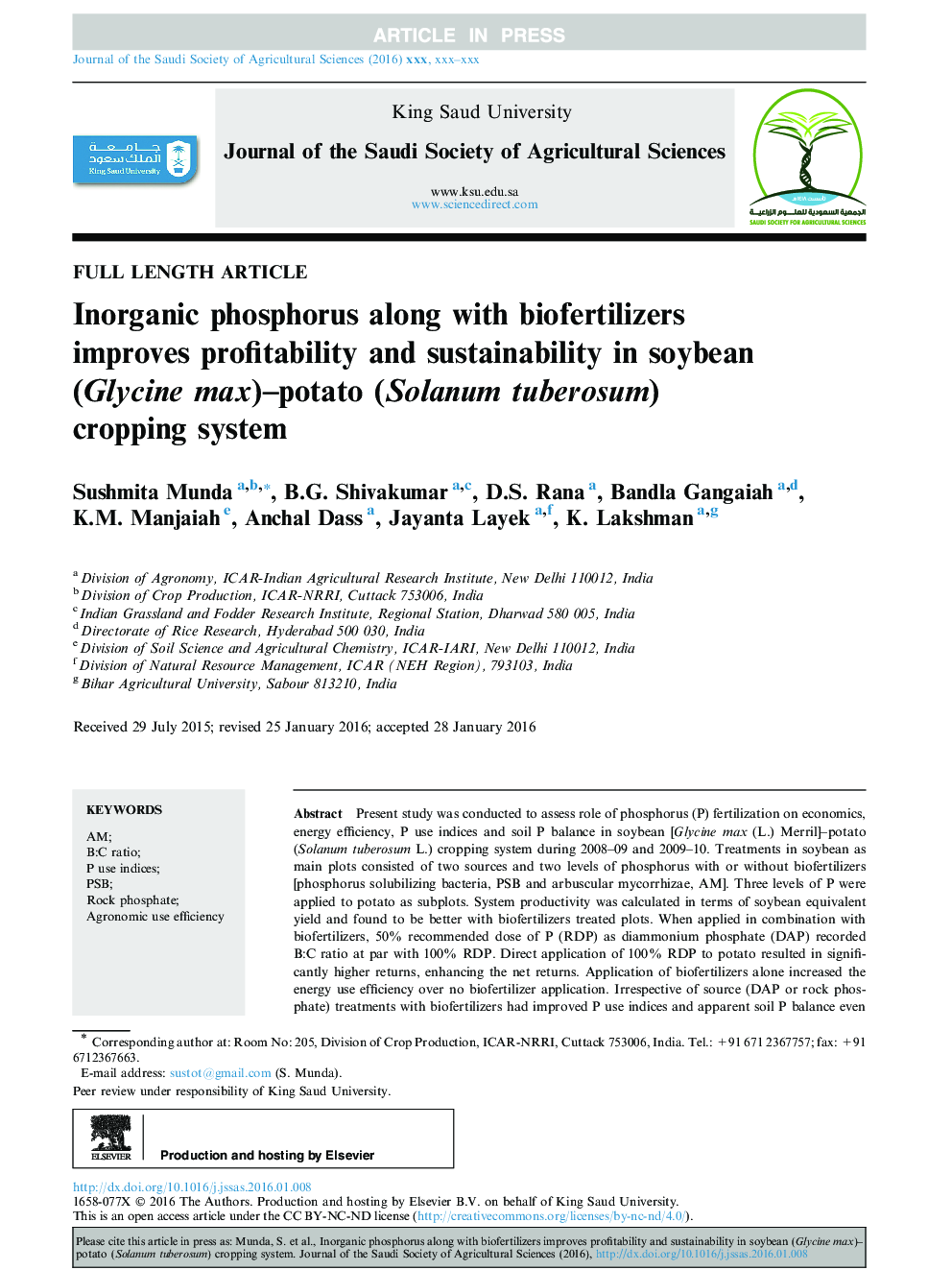| Article ID | Journal | Published Year | Pages | File Type |
|---|---|---|---|---|
| 8876325 | Journal of the Saudi Society of Agricultural Sciences | 2018 | 7 Pages |
Abstract
Present study was conducted to assess role of phosphorus (P) fertilization on economics, energy efficiency, P use indices and soil P balance in soybean [Glycine max (L.) Merril]-potato (Solanum tuberosum L.) cropping system during 2008-09 and 2009-10. Treatments in soybean as main plots consisted of two sources and two levels of phosphorus with or without biofertilizers [phosphorus solubilizing bacteria, PSB and arbuscular mycorrhizae, AM]. Three levels of P were applied to potato as subplots. System productivity was calculated in terms of soybean equivalent yield and found to be better with biofertilizers treated plots. When applied in combination with biofertilizers, 50% recommended dose of P (RDP) as diammonium phosphate (DAP) recorded B:C ratio at par with 100% RDP. Direct application of 100% RDP to potato resulted in significantly higher returns, enhancing the net returns. Application of biofertilizers alone increased the energy use efficiency over no biofertilizer application. Irrespective of source (DAP or rock phosphate) treatments with biofertilizers had improved P use indices and apparent soil P balance even at 50% RDP. This indicates the role of biofertilizers in P solubilization and making it available to plant. Biofertilizers application can help cutting down the fertilizer P application in soybean-potato cropping system without any considerable reduction in yield and economic returns.
Keywords
Related Topics
Life Sciences
Agricultural and Biological Sciences
Agricultural and Biological Sciences (General)
Authors
Sushmita Munda, B.G. Shivakumar, D.S. Rana, Bandla Gangaiah, K.M. Manjaiah, Anchal Dass, Jayanta Layek, K. Lakshman,
